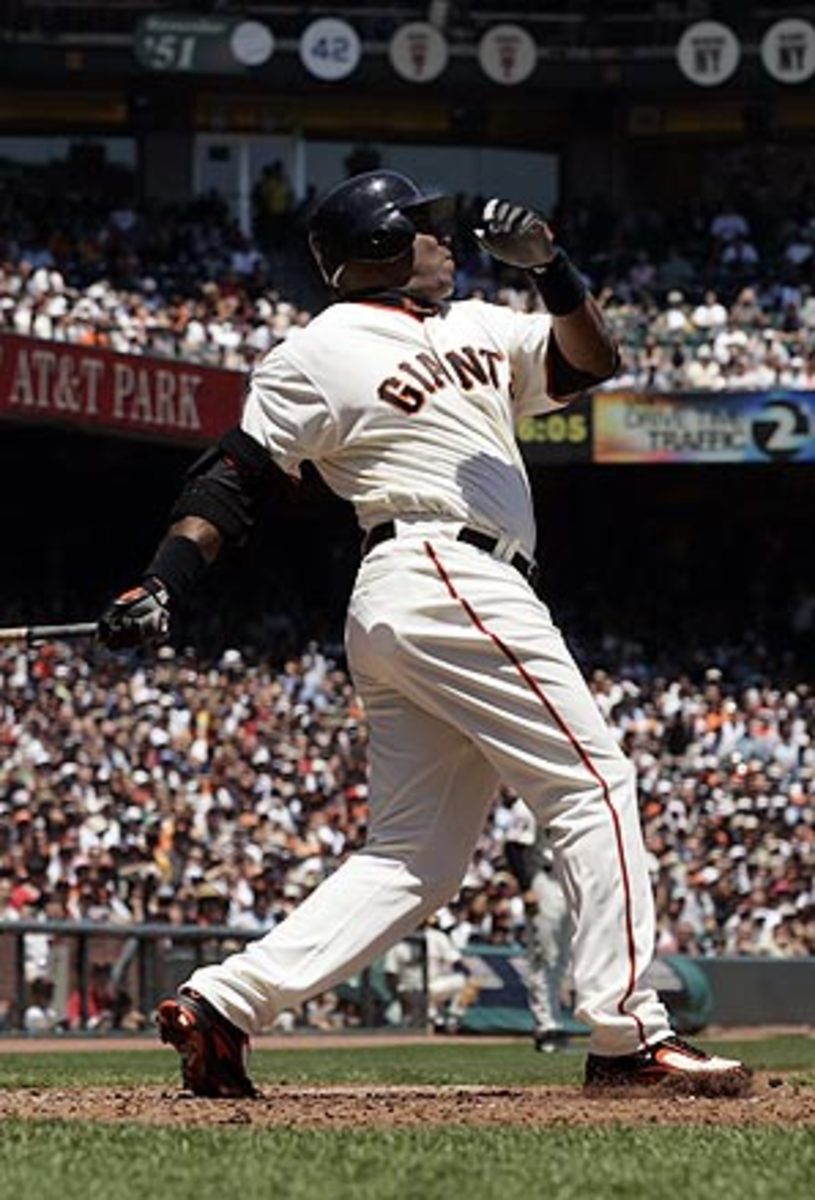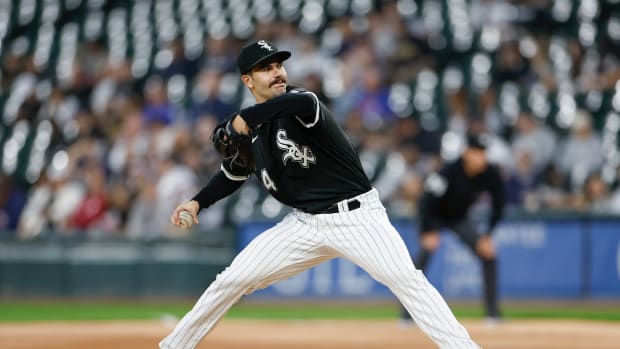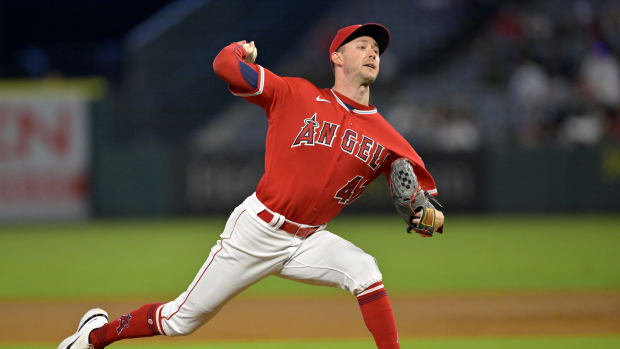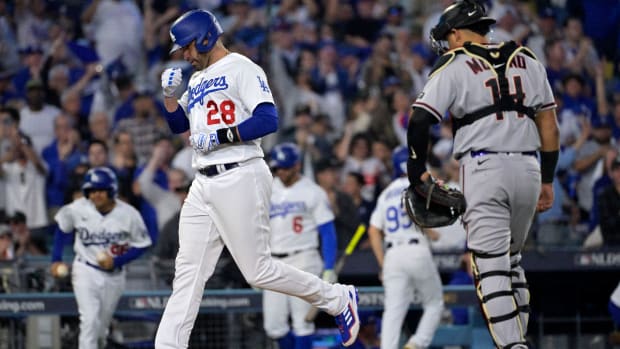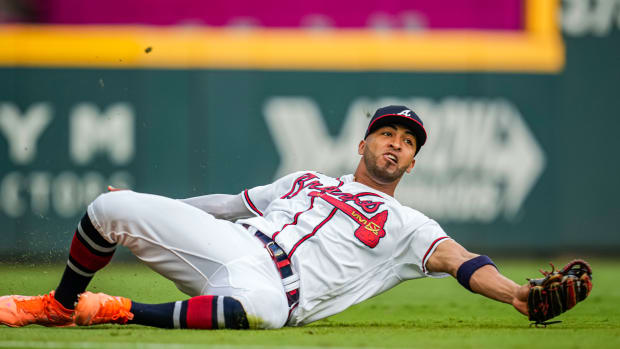Unconventional Wisdom: How good would Bonds be if he came back?
Oh, it was going to happen. It was just a matter of when. Not in March or April, maybe, and probably not in May or June. But as the trade deadline approached, some team was going to look at the market, realize that they were going to need to give up three or four quality prospects to acquire a good outfielder, and realize at that price it was worth signing ... Barry Bonds.
That was my line of thinking, at least. But time is running down, and so far there is no indication of it coming true. The Yankeesflirted with the idea of signing Bonds but traded for Xavier Nady instead. (Wonder how they'll feel about that when Ross Ohlendorf is closing games for the Pirates four years from now?) Various other teams -- the Rays, for instance -- are linked with Bonds on a regular basis in the blogosphere, but there's been no indication that any of them are taking the idea seriously. Bonds, it seems, just carries too much baggage -- and you thought those excess luggage fees on US Airways were bad!
But would signing Bonds actually make sense? What could he really contribute at this point? Who out there is desperate enough -- and brave enough -- to take a chance on him?
For starters let's consider what kind of player Bonds might be. Bonds was, on an at-bat for at-bat basis, among the most productive players in the league in 2007, contributing a VORP of 55.2 to the Giants.
The man, however, is 44 years old, and so as good as he's been, a significant amount of decline from last year's numbers could reasonably be anticipated. Overall, PECOTA forecasted Bonds for a .246/.420/.494 batting line in a neutral park this year. That intuitively looks about right. Bonds is still going to draw plenty of walks -- that's the one skill that doesn't diminish with age. But his strikeout rate is likely to go up, and his batting average and home run power likely to go down. His once-outstanding defense has become problematic too; Bonds has been six runs below average in left field in each of his past two seasons, and he probably ought to be a DH at this stage of his career.
Now, it's true that we don't know exactly what kind of shape Bonds is in. But the man is a fitness freak, and his agents have claimed that he could be in game shape after 7-10 days of facing live pitching. Besides, once you get into your 40s, the extra time off could be as helpful as harmful. So we'll go with Bonds' PECOTA as-is, but limit him to 40 games played to account for a little bit of time in getting ready and an occasional day off.
Still, even if Bonds is unlikely to be an All-Star caliber performer, teams expend small fortunes, in money and in prospects, to employ worse players every day. So let's consider which teams could actually use him. For a team that isn't going to make the playoffs, we can probably conclude that the media circus Bonds would bring with him simply isn't worth it -- and that Bonds probably wouldn't have interest in such an assignment in the first place. That leaves, by my count, 16 clubs that remain in some kind of contention. Eleven of those 16 are pretty easy to eliminate:
Yankees -- Better get those Jose Tabata voodoo dolls out.
Red Sox -- Zero place for him here.
White Sox -- Plenty of firepower in house.
Twins -- Might be a slight upgrade over Jason Kubel, but not worth the trouble.
Tigers -- There's the Jim Leyland connection, but they're already having trouble trying to get everyone playing time.
Phillies -- You'd have to move Pat Burrell to right, and ditch the Geoff Jenkins/Jayson Werth platoon. The solution here is to play Werth more often, not to sign Bonds.
Marlins -- Corner outfielders have been reasonably productive.
Cubs -- Not unless Alfonso Soriano gets hurt again.
Brewers -- Left field is the least of their problems.
Dodgers -- Just traded for that Ramirez guy.
Diamondbacks -- Right field has been a mess, and you could conceivably move Conor Jackson there and play Bonds in left, but Justin Upton is apparently on his way back.
That gives us five clubs where Bonds might make some kind of sense: the Angels, the Mets, the Rays, the Rangers and the Cardinals.
Let me pause to explain what I'm doing here. Keith Woolner's Marginal Lineup Value formula, from which VORP is ultimately derived, can also be used to value a player's contribution over a given period of time. If we translate Bonds' PECOTA forecast into MLV, we find that he would be expected to contribute 7.3 runs above average with his bat if he played in 40 games. We also need to evaluate his work in the field, where PECOTA thinks that he'd cost a team 3.2 runs versus a league-average left-fielder over a 40-game time frame. Add those two numbers together, and we get 4.1 runs; this is Bonds' marginal contribution over average on the balance of season.
But we can do better than that, by going through this same exercise for the players that Bonds might be replacing on each prospective suitor. We'll accomplish this by combining each player's pre-season PECOTA forecast with his performance thus far in 2008, giving two-thirds of the weight to the PECOTA and one-third to his year-to-date numbers. All statistics are translated to a neutral park, and translated minor league statistics are applied for players who have spent a significant amount of time this year on the farm.
Just whose at-bats Bonds might be replacing on each club is another question, since in each instance the teams have somewhat fluid outfield or DH situations. But we'll do the best we can and make some educated guesses. In the case of St. Louis, for instance, we'll figure that 25 of Bonds' 40 games would come at Skip Schumaker's expense, and the other 15 from Joe Mather. By comparing Bonds' projected numbers against those of the men he would displace, we can calculate his marginal value to each club.
Let's rank the five plausible teams in order of worst fit to best. First up, the St. Louis Cardinals:
It's true that Schumaker is playing somewhat over his head; the Cardinals have had a real knack for making something out of nothing in their outfield this year. But Schumaker's defense is fairly good, and he and Mather enhance one another's value as platoon partners. Overall we see Bonds contributing just 3.1 marginal runs to the Cardinals on the balance of the season. They should therefore be eliminated as a serious contender.
Next, the Texas Rangers:
The Rangers have been willing to take their chances with troubled players in the past, most notably Sammy Sosa and Milton Bradley, and a Bonds experiment would make a certain amount of sense. Brandon Boggs has hardly been that great to begin with and is substantially outperforming his minor league track record. Frank Catalanatto is not really an everyday player at this stage of his career. The problem is that Milton Bradley's health pretty much limits him to DH for the time being, so you'd wind up playing Bonds in the field and giving back some of what you gained at the plate. We project a marginal improvement of 7.1 runs if the Rangers were to sign Bonds.
The next contestant is the Tampa Bay Rays:
The Rays could employ Bonds as their designated hitter, but they are getting a little bit more production out of their status quo alternatives -- mostly Cliff Floyd and Jonny Gomes. If Bonds could deliver the same kind of numbers that he did in 2007 the upgrade would probably be worth it, but with the likelihood of some age- and layoff-related decline it's hard to make an argument for rocking the boat.
Now the New York Mets:
Here's a club that might be crazy enough to try Bonds. Moises Alou isn't coming back. Ryan Church probably isn't either. Left field has been a revolving door, and the situation has been so bad that Endy Chavez, who at least plays fantastic defense, might actually be their best option.
Bonds would provide an immediate upgrade on offense, adding an extra 12 runs or so to their balance sheet over the remainder of the season. But he'd hurt their defense, especially in a big ballpark like Shea. Overall we're looking at a marginal contribution of 7.9 runs -- not trivial, but hardly enough to make a move imperative.
Finally, the Los Angeles Angels:
The Angels have plenty of names to rotate through their DH and left-field slot. But the problem is that none of them are really very much good. Garrett Anderson has had his moments but has been an overrated player for years now. Gary Matthews Jr. has made too many starts at DH this year for a player whose principal value is in the field. Juan Rivera is ... Juan Rivera, largely indistinguishable from several dozen Triple-A players with the same skill set. Bonds could stabilize the DH slot, contributing 8.5 runs to the Angels on the balance of the season. While it's not likely that we're going to see anything happen -- the Angels made their big move when they acquired Mark Teixeira -- this is still the best fit both mathematically and geographically.
Ultimately, though, what has happened is that the 30 major league teams have conspired (not literally, I'd hope) to run down Barry Bonds' clock. There are a number of decent fits, but no one great one, and if you're only renting a player for the scope of 35 or 40 ball games the marginal contribution is going to be fairly small -- not more than an extra win on the season for any of these clubs. If you were going to sign Bonds the time to have done so would have been much earlier in the season.
I would keep a watchful eye on the Mets, however. If Bonds ends up in anyone's uniform it's likely to be that one, as Omar Minaya is an active GM who finds himself with few alternatives and a lot of pressure to reach the playoffs. But the odds are overwhelming that Bonds is going to be sitting on his couch come October.






























